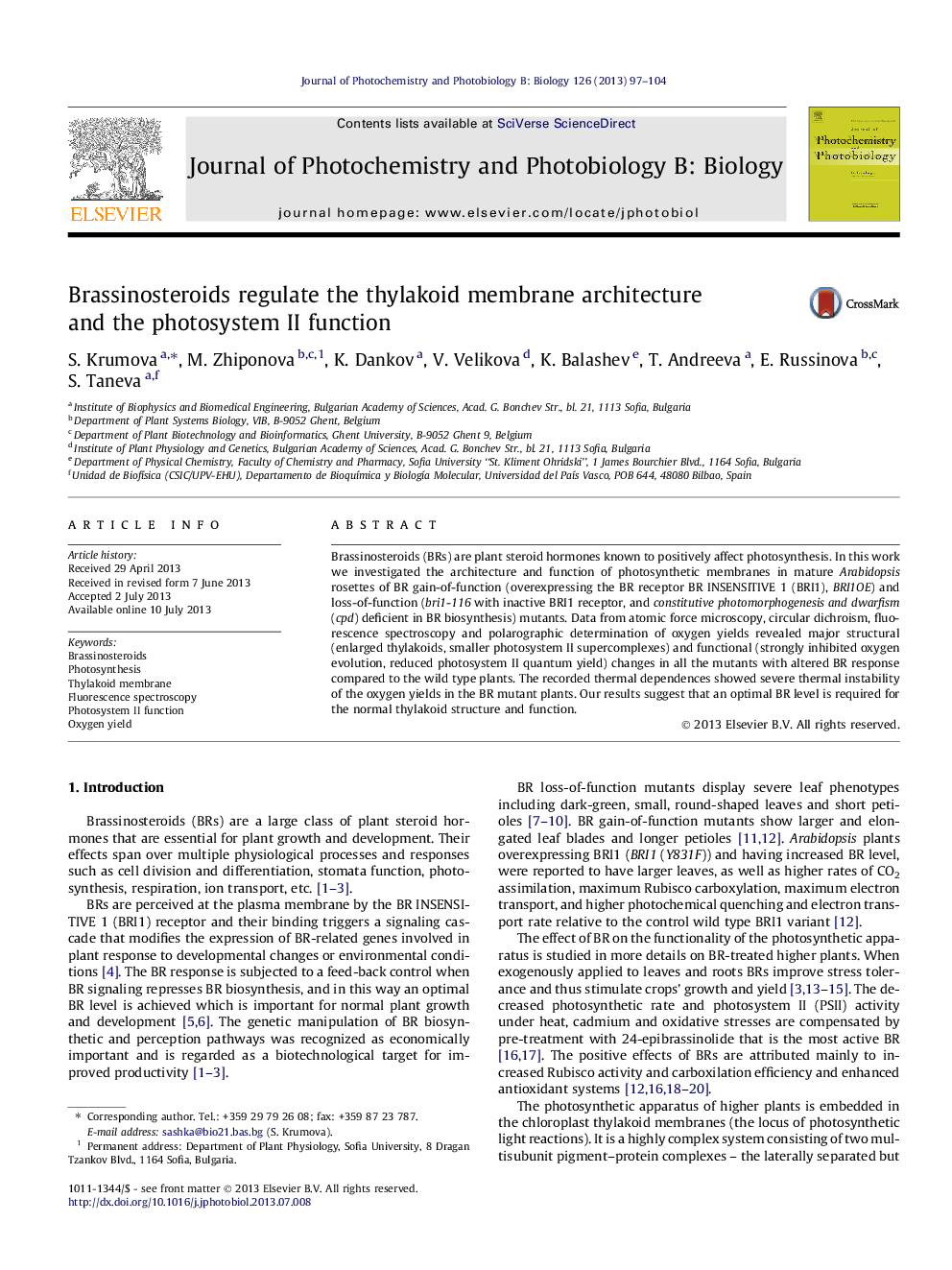| Article ID | Journal | Published Year | Pages | File Type |
|---|---|---|---|---|
| 30500 | Journal of Photochemistry and Photobiology B: Biology | 2013 | 8 Pages |
•Brassinosteroids control thylakoid membrane architecture and function.•Smaller PSII supercomplexes in BRI1OE, bri1-116 and cpd thylakoids.•BRI1OE, bri1-116 and cpd thylakoids exhibit impaired oxygen evolution.•Suboptimal BR level hampers the thylakoid structure and functionality.
Brassinosteroids (BRs) are plant steroid hormones known to positively affect photosynthesis. In this work we investigated the architecture and function of photosynthetic membranes in mature Arabidopsis rosettes of BR gain-of-function (overexpressing the BR receptor BR INSENSITIVE 1 (BRI1), BRI1OE) and loss-of-function (bri1-116 with inactive BRI1 receptor, and constitutive photomorphogenesis and dwarfism (cpd) deficient in BR biosynthesis) mutants. Data from atomic force microscopy, circular dichroism, fluorescence spectroscopy and polarographic determination of oxygen yields revealed major structural (enlarged thylakoids, smaller photosystem II supercomplexes) and functional (strongly inhibited oxygen evolution, reduced photosystem II quantum yield) changes in all the mutants with altered BR response compared to the wild type plants. The recorded thermal dependences showed severe thermal instability of the oxygen yields in the BR mutant plants. Our results suggest that an optimal BR level is required for the normal thylakoid structure and function.
